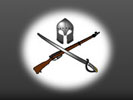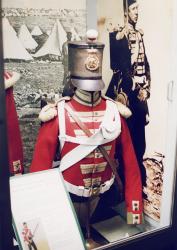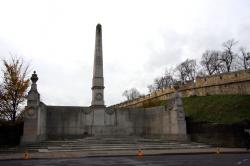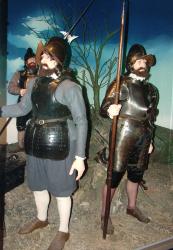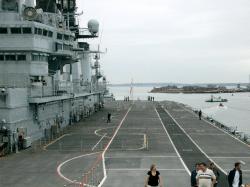Translate this Page
Laing's Nek
Battle Name : Laing's Nek
Date(s) : 28 January 1881
Part of : British Victorian Colonial 'Small Wars' , The 1st Boer War, or Transvaal War of Independence ,
Outcome : A victory for Boer (Transvaal) forces over British Colonial forces
Type of battle : Land
Summary
The British under General Colley failed to dislodge Boer forces positioned around the main pass from Natal into the Transvaal and suffered heavy casualties by attacking them, head on, up a steep slope. Artillery had little effect on the Boers.
Also the last time British Regimental colour were carried into battle.
Location
Laing's Nek- a pass through the Drakensberg foothills about 25 miles from Newcastle on the Newcastle to Standerton road from Natal north into the Transvaal, South Africa. (South Africa)
More details
Following their shock at Bronkhorst Spruit, the British under Sir George Colley went on the offensive and decided to advance into the Transvaal from Natal taking the road through Laing's Nek. This position was almost purpose-built for ambush and when he arrived he found the Boers had beaten him to it and were firmly dug in along the ridges on either side of the pass.
On the eastern side of the approach was a table hill which the Boers had claimed as their main position. Towards it's eastern end, a spur ran south and down to the level of the valley floor, then back up again to a small, round-topped hill. The small hill top was defended by a small Boer force, but Colley decided that the best way of assaulting the main position was to advance up the spur to the table hill and although he hadn't the force to carry the small hill as well, he would send a cavalry diversion to keep it occupied.
The 58th Regiment under the command of Col. Deane of the Natal Field Force advanced to the spur, while troops of the King's Dragoon Guard covered their right flank and proceeded towards the small hill. Elements of the 60th Rgt and Naval Brigade provided covering and artillery fire onto the main Boer position.
As the KDG crested the small hill, they were met by withering rifle fire which downed most of their officers. Leading the charge, but the majority of the troopers got amongst the Boers and could perhaps have carried the position if properly supported by infantry, but no such support arrived and the cavalry were slowly driven back down the slope.
Meanwhile the 58th had begun advancing up the steep spur towards the table hill but with heavy fire to their front and sides, and rear flank when the cavalry attack on the outpost hill failed, their task was doomed. They held the spur for some time but couldn't crest the ridge in the face of such resistance, and after a while the withdrawal was ordered, under the covering fire of companies of the 60th, thrown forward for this purpose.
This was the last battle when British regimental colours were carried into battle. These colours, of the 58th (later 2nd battalion, The Northamptonshire Regiment) are now preserved in the Natinal Army Museum, London, UK.
